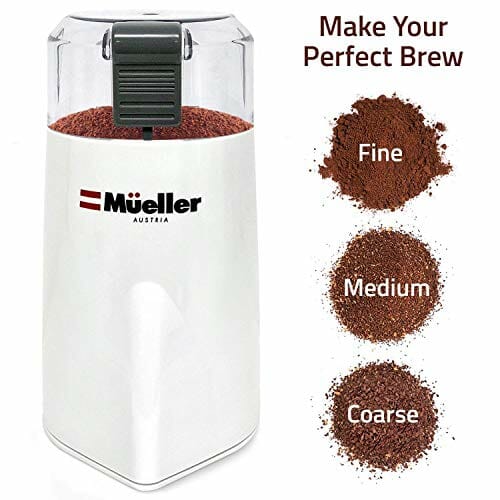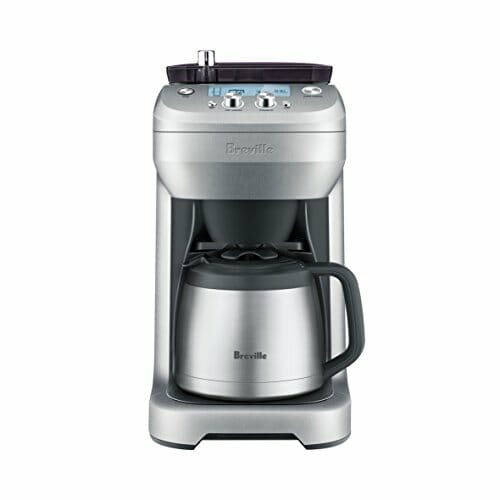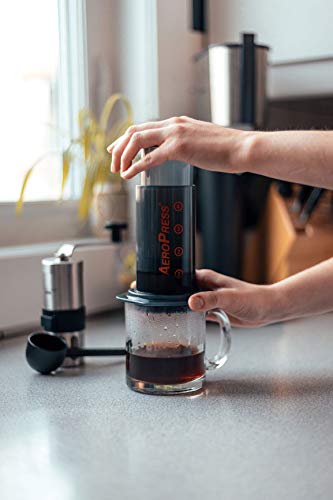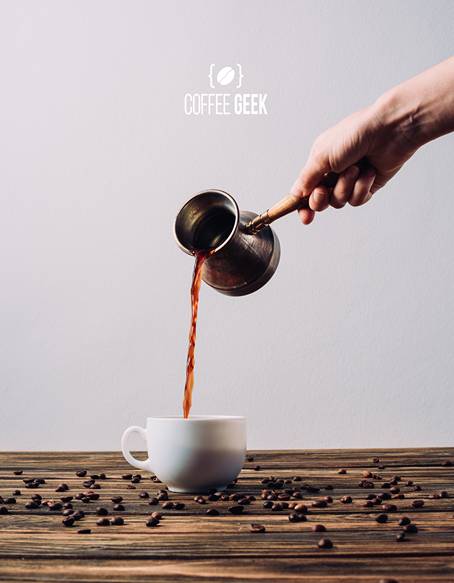Once you pile up the cost of buying coffee at your favorite cafes, it gets real expensive real fast.
So brewing coffee at home, in the long run, can help you save some (Star)bucks, save the environment, and have some time for yourself to wind down with brewing, smelling the aroma, and enjoying the cup at leisure.
In this article, I’ll show you step by step tips and tricks on on how to make the perfect cup of coffee using various brewing methods, be it with or without a coffee machine.
Knowing Your Coffee Beans
The quality of these aromatic beans is a big factor in altering the coffee tastes and smoothness of the result.
Moreover, each brewing method calls for different profiles, so you need to make adjustments appropriately to produce the expected coffee flavors.
So by taking into account the following characteristics of the beans, you can drastically improve the cup of coffee on your next tries.
Type
There is more than one type and each type has distinctive traits that can affect the final brew. The two most well-known types of beans are Arabica and Robusta.

Arabica
Arabica dominates the industry as over 70% of the coffee market share in the world belongs to this premium coffee bean.
Arabica is known for its mild and sweet coffee taste with low acidity levels, heightened by the unique fruity and chocolaty notes.
Therefore, these superior coffees are often served hot with brewing methods such as drip machines and Pour-Overs.
Many low-acid coffee brands have also leveraged Arabica’s specific trait to meet the demand of coffee drinkers with sensitive stomachs. You can check out my reviews of some of the best low-acid beans.
And, according to a survey on coffee consumption habits of Americans published in 2020 by the National Coffee Association [NCA], about 60% of the coffee served in the U.S. is brewed using premium beans.
As more and more coffee drinkers demand gourmet quality, a lot of specialty coffee shops stray from the traditional espresso blends consisting of a mix of Arabica and Robusta.
Instead, a third-wave cup of coffee these days often strives for 100% premium Arabica to satisfy the taste buds with its superior flavors.
Robusta
The less popular cousin, Robusta, accounts for nearly the rest of the market, around 30%.
It’s considered to be more “inferior” to Arabica due to its bitter and bold flavor with earthy notes, and higher acidity and caffeine content.
Nevertheless, Robusta’s complex flavor profile is perfect for making cold coffee drinks such as Cold Brew and blends better with milk and creamer as its bitterness doesn’t cancel out the sweetness as Arabica may.
It’s also suitable for making coffee recipes from countries that mainly produce Robusta beans, such as Vietnamese Coffee.
And don’t forget, the traditional blend of espresso typically contains 20% of Robusta beans as well, to make it work better with sweetening ingredients for espresso-based coffee beverages.
If you want to learn more about coffee beans and where coffee comes from, check out my article.
Roast Profile
Depending on the type of coffee drink you want to brew and the coffee brewing method, you need to adjust the roasting profile accordingly to be able to draw out the best flavor content.
The roasting profile can affect the brew’s flavor, notes, aroma, aftertaste, and brightness, also known as acidity.
Lighter roasts tend to have higher acidity and brighter fruity notes and preserve more of the coffee’s organic and unique taste and quality.
On the other hand, darker roasts tend to be less acidic and explore deeper and bolder earthy tones and essences.

And the longer the beans are roasted, the more the original compounds are broken down and more coffee oils escape to the surface.
The medium roast profile is the most popular choice for almost all coffee-making techniques. However, you can always freely play around with the roast degrees to discover new interesting flavor combos regardless of the method you use.
Here are some common coffee roasting profiles and some brewing suggestions:
- Light roast: Pour-Overs and AeroPress
- Medium roast: Pour-Overs and Cold Brew
- Medium-dark roast: French Press and espresso machine
- Dark roast: espresso machine and AeroPress
Some coffee packets may have an explicit “Espresso roast” label, indicating that they’re suitable for brewing espresso.
Grind Size
Size matters because it can significantly affect your coffee extraction. This is one of the top factors that you should look into adjusting for a more balanced and better-tasting coffee.
Usually, if the grounds are too coarse for the coffee-making method you use, the cup of coffee will be under-extracted.
As the size is too big, water can easily slip through, shortening the coffee-to-water contact time, or the time it takes to extract coffee solubles into water.
On the contrary, if the grind is too fine, this lengthens the coffee-to-water contact time, leading to an over-extraction of coffee. Sometimes, too finely ground coffee may even clog the flow of water.
Common coffee grind sizes mainly comprise:
- Extra fine
- Fine
- Medium-fine
- Medium
- Medium-coarse
- Coarse
- Extra coarse
Check the ultimate guide to coffee grind size which includes all you need to know about why grind size matters and directions for different coffee brewing techniques.
To upgrade your size game, consider investing in a high-quality burr grinder.
Although cheaper, blade grinders produce an uneven batch of grounds as they only simply cut up the beans into smaller pieces.
So compared to a blade grinder, a burr grinder can give you better control over the size of the grounds. A more consistent size translates to a more balanced cup of Joe.
Freshness
Whatever you do, make sure your coffee is freshly roasted and freshly ground.
This is very vital to the quality of the cup of Joe, as you can almost always taste the staleness if the beans have been left there for too long.
So how fresh are we speaking here?
Roasting
The agreed-upon freshness of coffee beans addresses the roast date.
Generally, coffee is considered fresh from 2 to 3 weeks up to 3 months after the roasting process. As the beans are roasted, degassing, the act of releasing carbon dioxide, starts.
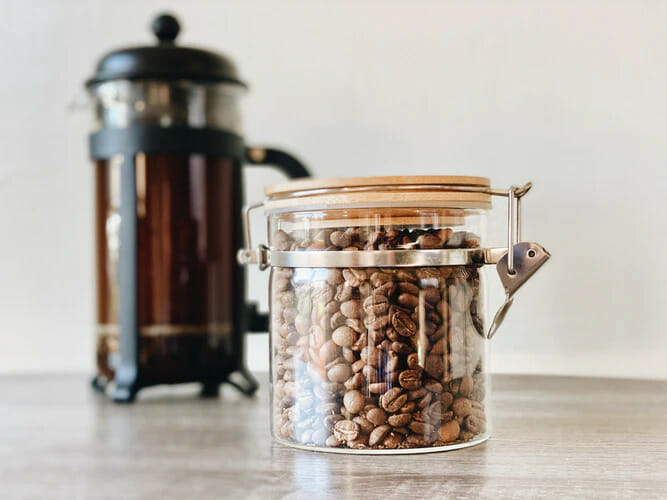
The longer you leave them, the more carbon dioxide is emitted, the staler they become.
Freshness can also depend on how they’re stored. The less they’re exposed to the air, the slower the oxidation process that prompts staleness is.
The best way to evaluate the freshness is to check the roast date.
Grinding
Another thing is, whole beans last much longer than ground coffee, which can last from a few weeks up to a month at most.
Once the beans are ground, the degassing process speeds up, making them stale much quicker.
As a frequent coffee drinker, I advise you to grind the beans using your grinder at home whenever you make coffee to get the freshest brew each time.
You may also get a coffee machine that comes with a built-in grinder for convenience and quality.
Knowing Your Water
Quality
Can you just use any water? Many may just use tap water. However, tap water contains various minerals, chlorine, and odor which can have an impact on the taste and aroma of the cup of coffee.
Moreover, unfiltered water can cause more mineral build-ups over time as well which can slip into your coffee each time you brew.
So it’s best to use spring water, or filtered water at the very least, to minimize this issue.
Coffee-To-Water Ratio
What is the perfect coffee to water ratio?
The golden ratio for the ground coffee and water proportion is 1 – 2 tablespoons (5 – 10 g) of ground coffee for every 6 oz (177 ml) of water.
However, this ratio is subjected to variation depending on the coffee maker and personal preference in terms of strength.
Water Temperature
How hot is the perfect cup of coffee?
The optimal brewing temperature to make the best coffee isn’t 212 degrees Fahrenheit (100 degrees Celsius) but rather the near-boil point of between 195 to 205 degrees Fahrenheit (91 – 96 degrees Celsius).
Grab a thermometer to help you get the water temperature right. Or else, bring water to a boil, take it off heat, and let it cool off for around a minute before using it to make coffee.
Of course, this tip doesn’t apply to Cold Brew. To make a cup of this refreshing coffee drink, use cold filtered water. No more hassles and getting flustered over the water temperature.
Brewing Methods – How Do You Brew Coffee?
So, how do you properly make coffee?
There is more than one way to make the perfect cup of coffee. And you don’t necessarily need a dedicated device to perform the coffee brewing process either.
Below are some simple instructions to extract the optimal coffee taste using common devices.
How Do You Brew Coffee In A Coffee Maker?
Espresso Machine
- Fill the water reservoir.
- Preheat the machine and the cup.
- Insert the coffee filter basket into the portafilter.
- Fill the basket with coffee grounds and tamp the grind.
- Insert the portafilter into the group head to start brewing.
- Steam milk to make espresso-based drinks like latte and cappuccino and make latte art.
Click here to learn more details about how to make espresso. If you’re interested in getting a new espresso machine, check out our latest reviews.
Drip Coffee Maker
- Fill the water reservoir.
- Place a paper filter into the filter basket.
- Add coffee grounds to the filter.
- Press the start button to start brewing.
Find our latest coffee maker reviews and learn how to make the most out of them.
French Press
- Preheat the French Press.
- Add coffee grounds wet them with hot water.
- Let it bloom for 30 seconds.
- Add more hot water and let it steep for 3 minutes and 30 seconds.
- Press down the plunger.
- Decant into a coffee pot.
Want more details about this manual device called French Press?
AeroPress
- Place a filter into the cap.
- Twist the cap onto the chamber.
- Place it on a sturdy cup.
- Add the grind into the chamber and tamp.
- Add water.
- Stir for 10 seconds.
- Insert the plunger and press it down slowly.
Hario V60
- Place the dripper over the coffee pot.
- Fold one of the paper filters and place it into the dripper.
- Soak the filter and discard the water.
- Add the grind and wet it with hot water.
- Let it bloom for 30 seconds.
- Slowly pour water over the grind in a circular motion in 3 minutes.
Chemex
- Fold the bonded filter.
- Soak the filter and discard the water.
- Add grounds, tamp, and wet them with hot water.
- Let it bloom for 30 seconds.
- Slowly pour water over the grind in a circular motion.
Why not learn more about the differences between AeroPress and Pour-Over devices?
How To Make The Perfect Cup of Coffee Without A Coffee Maker?
Cowboy Method
- Heat a pot with water.
- Add grounds once you see popping bubbles on the surface and stir.
- The longer it’s left on heat, the more bitter the coffee becomes.
- Remove the pot from heat once the grind sinks.
- Pour the extraction into the cup.
Turkish Coffee Method
- Add water and grounds into the cezve.
- Heat the cezve at low or medium heat.
- Remove it from heat when it’s about to boil.
- Discard or place the foam into the cup. Stir the content in the cezve.
- Return it to heat and repeat steps 2, 3, 4 twice more.
- Remove it from heat and pour the extraction into the cup.
To Wrap Up
Make sure to incorporate these tips and tricks on your next try to brew the perfect cup of coffee at home.
It’s not hard to pull it off once you know all of the secrets. Stay caffeinated!


